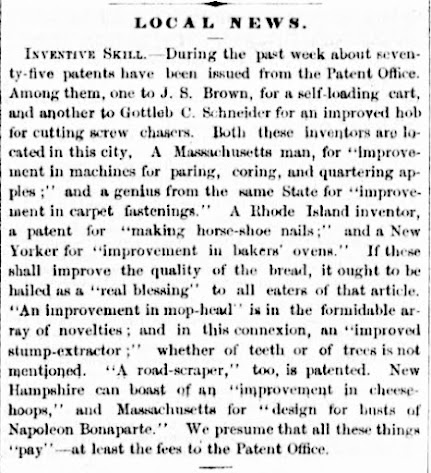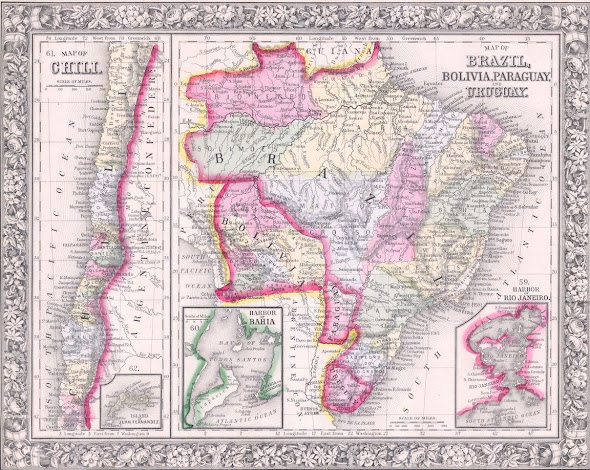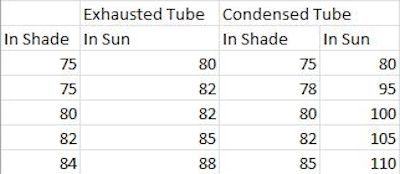Inventions-Part 1-"An improved Hob for Cutting Screw Chasers"
You probably wonder, “what will they think of next?”
An avalanche of inventions was offered to the middle and upper classes. A clothes dryer in 1850; and a half dozen different designs of clothes pins if you didn’t have a dryer; a washing machine in 1860; 4 minute ice cream freezers; water filters; “sanitary diapers”; toilet paper; matches; sewing machines; microscopes; photography; petroleum jelly; rubber bands; refrigerators; kitchen range and oven; steam heat and radiators; chewing gum; a steam driven elevator for an eight story hotel; Yale locks; speaking tubes to connect the White House to cabinet offices; and saponifiers. (Don’t know what a saponifier is? Look it up or keep reading.)
On the street, gas street lights, fire hydrants and fire alarm boxes, along with horse powered street sweepers appeared.
In court rooms things changed with the introduction of “phonography,” what a later generation would call “short hand.” For the first time, complete and exact transcripts of a trail could be reviewed.
Abroad, the population of London, England was enjoying the emerging subway and Russians advertised a new electric harpoon for whale hunting.
America was gaining an international reputation in the 1850s
as a source of inventions.
One reason was the United States had a well thought out and enforced
patent law system. Another reason was the United States did not recognize other
countries’ patent or copyright laws. In
modern times, the West accuses China of stealing technology. The United States
was considered the biggest thief in the 19th century.
Originally, the patent office required not only detailed
drawings and descriptions of an article to be patented, but a physical model as
well.
A fire in 1836 wiped out the models and drawings of most patents up until then. A fire proof building was built to replace the old one. By September 1877 the patent office had tens of thousands of models. Neither the models, drawings or the building roof turned out to be fire proof. Many models and 600,000 drawings were saved.
In 1926 Congress moved to get rid of the model collection. The Smithsonian took on 10,000 of them and the rest were sold off to a wide variety of collectors. The Smithsonian has issued
catalogues with photos of their collection.
What is a "screw chaser?" A screw chaser is not, as you might suppose, an 18 -year-old. It is machinist's tool for enlarging the threads in a bolt hole. For example, if you are faced with a threaded hole in a piece of machinery that requires 1/4 inch bolt but you have 5/8 inch bolt, the screw chaser will enlarge the hole to fit the larger size bolt. A hob for a screw chaser is a tool that makes screw chasers.







Comments
Post a Comment